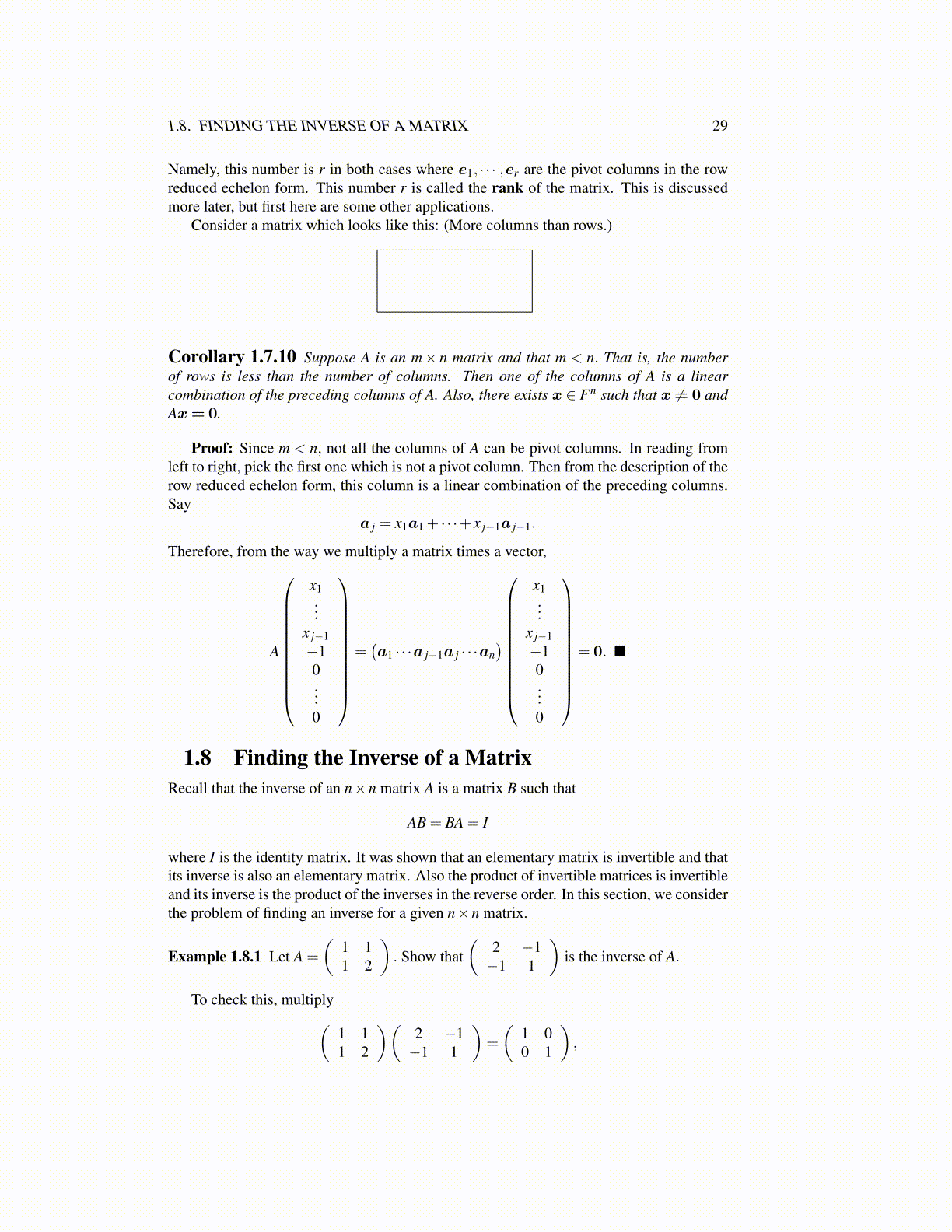
1.8. FINDING THE INVERSE OF A MATRIX 29
Namely, this number is r in both cases where e1, · · · ,er are the pivot columns in the rowreduced echelon form. This number r is called the rank of the matrix. This is discussedmore later, but first here are some other applications.
Consider a matrix which looks like this: (More columns than rows.)
Corollary 1.7.10 Suppose A is an m× n matrix and that m < n. That is, the numberof rows is less than the number of columns. Then one of the columns of A is a linearcombination of the preceding columns of A. Also, there exists x ∈ Fn such that x ̸= 0 andAx= 0.
Proof: Since m < n, not all the columns of A can be pivot columns. In reading fromleft to right, pick the first one which is not a pivot column. Then from the description of therow reduced echelon form, this column is a linear combination of the preceding columns.Say
a j = x1a1 + · · ·+ x j−1a j−1.
Therefore, from the way we multiply a matrix times a vector,
A
x1...
x j−1−10...0
=(a1 · · ·a j−1a j · · ·an
)
x1...
x j−1−10...0
= 0. ■
1.8 Finding the Inverse of a MatrixRecall that the inverse of an n×n matrix A is a matrix B such that
AB = BA = I
where I is the identity matrix. It was shown that an elementary matrix is invertible and thatits inverse is also an elementary matrix. Also the product of invertible matrices is invertibleand its inverse is the product of the inverses in the reverse order. In this section, we considerthe problem of finding an inverse for a given n×n matrix.
Example 1.8.1 Let A =
(1 11 2
). Show that
(2 −1−1 1
)is the inverse of A.
To check this, multiply(1 11 2
)(2 −1−1 1
)=
(1 00 1
),